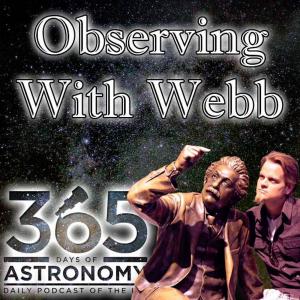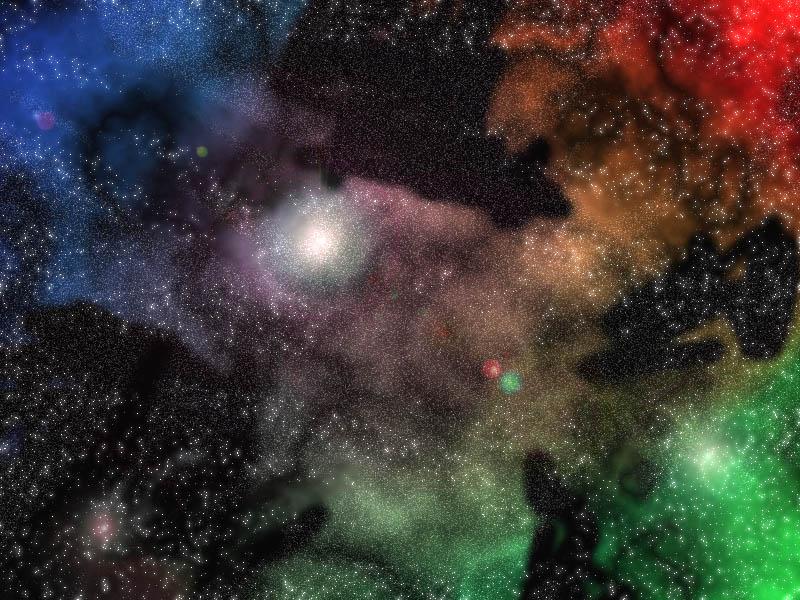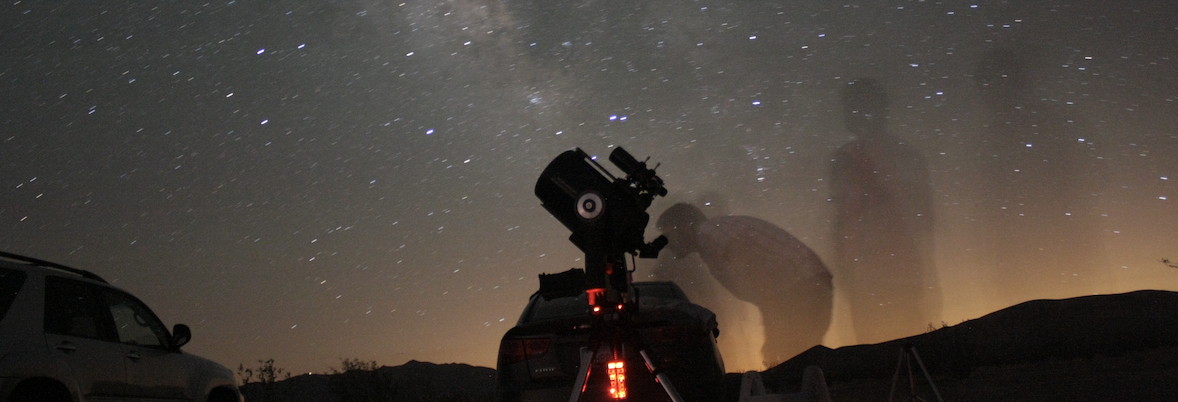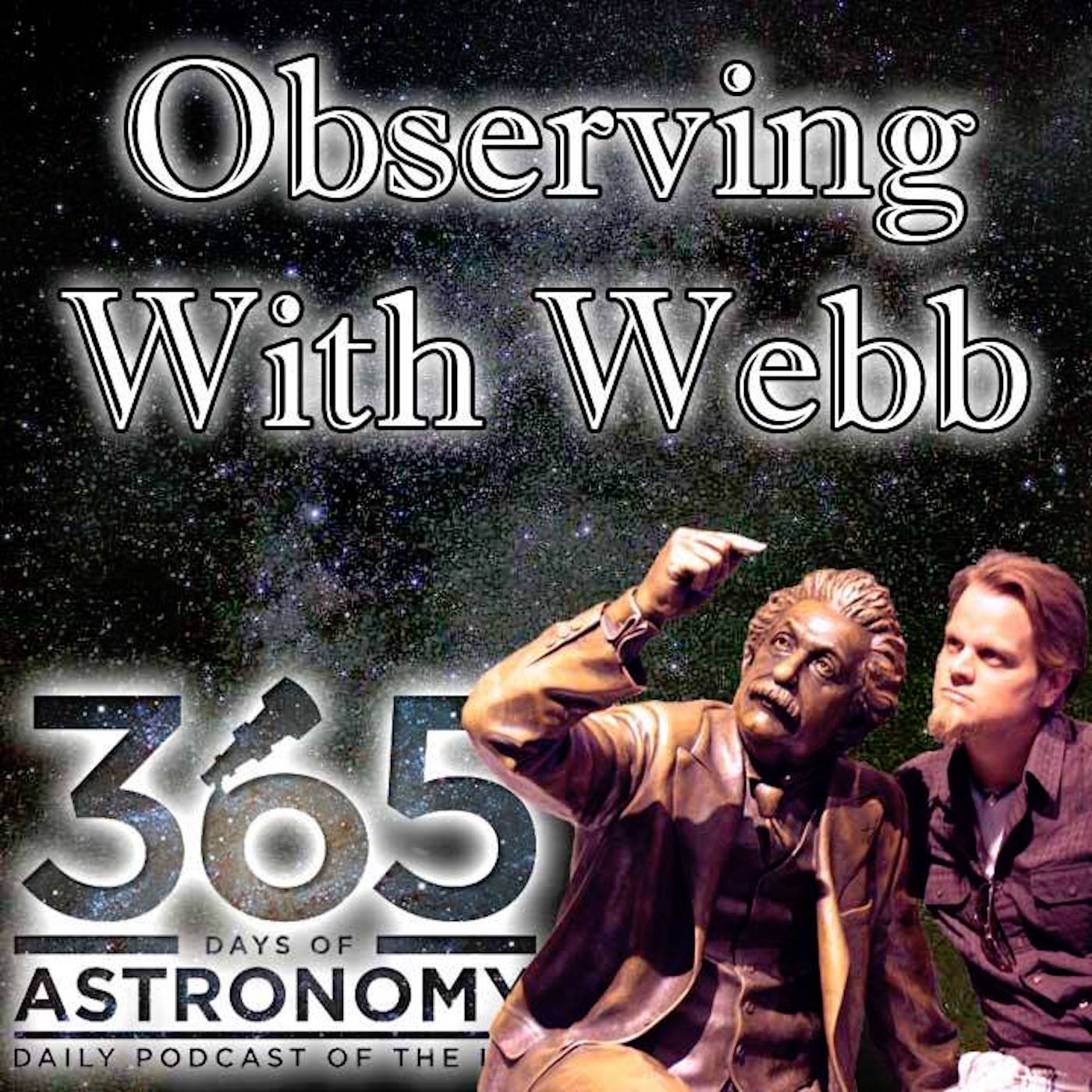Episodes

Monday Sep 30, 2013
October 2013
Monday Sep 30, 2013
Monday Sep 30, 2013
Observing With Webb October 2013
To listen to this email as a podcast, click here
To see a video of this information (<10 min long) click here
October is a pretty normal month, but it also gives us more opportunities to check out the sky, given that the sun is setting earlier, rising later, and we have football games on Friday nights. Get out there!
EVENTS...
1st – Close Encounter – Mars, Moon – Get out early in the morning and check out the thin and low crescent Moon. Up and to the left about 8˚ will be Mars.
New Moon – 4th (darkest skies)
6th – Close Encounter – Moon, Saturn, Mercury – If you’ve got a good view of the western horizon, you MIGHT be able to catch a very thin crescent Moon with Saturn 4˚ above it and Mercury 2˚ down and to the left. It will be difficult to see without a clear horizon (no trees or mountains in the way) and binoculars.
7th - 8th – Close Encounter – Moon, Venus – Look West after the Sun sets and look for a very thin waxing crescent Moon. On the 7th, Venus will be 9˚ to the left of the Moon and on the 8th the Moon will be 6˚ above and to the left of bright Venus, which will be the first “star” you see in that direction.
First Quarter Moon – 11th (Visible until midnight)
12th – Triple Shadow Transit on Jupiter (telescope necessary) – 12:32am – 1:37am – The shadows of Io, Europa, and Callisto will all be seen on Jupiter. You’ll need to have a telescope and a good view of the ENE horizon, since it will be low.
Full Moon – 18th (Visible all night)
18th – If you hear anything about a Lunar Eclipse today, it’s only a penumbral eclipse, which you really can’t see, so don’t get excited. More info at skypub.com/oct2013eclipse
25th – Close Encounter – Moon & Jupiter – Find the almost 3rd quarter moon, and then find the bright point about 7˚ up and to the left, and you’ll be looking at Jupiter.
Last Quarter Moon – 26th (Visible from midnight into the morning)
29th – Close Encounter – Mars, Moon – Get out early in the morning and check out the crescent Moon. To the left about 7˚ will be Mars.
PLANETS...well, the ones visible with your naked eye
Planets you can see around Sunset – Venus (W)
Planets you can see throughout the night – Jupiter (E)
Planets you can see in the Morning – Jupiter (S), Mars (E)
Mercury – Not very visible this month
Venus – Sets pretty quickly after sunset (around 8pm), and will be very low in the West. Closest to the Moon on the 8th.
Mars – Look East after 3:30am and before sunrise, you may be able to locate it close to the horizon – about 25˚- 40˚ above it. It’s hanging out around the right-hand side of Leo this month. Look between Jupiter and the horizon. Close to the Moon on the 1st and 29th.
Jupiter – Look East after 12am for the brightest “star” before the sun rises. By sunrise, it’ll be 70˚ above the horizon. Close to the Moon on the 25th.
Saturn – Very tough to find in the west after Sunset, and disappears behind the Sun around mid-month.
CONSTELLATIONS... (see sky map link at the bottom for a Star Map for this month – or ask Mr. Webb) Look straight up and you'll see...
Just after Sunset (sunset is around 6:30pm) – Cygnus the Swan and Lyra the Harp
Between Sunset and Midnight – Lacerta, Pegasus (the Great Square)
Midnight – Pegasus, Andromeda - Extra Challenge! Using your naked eye (dark-adapted and in a dark area) or binoculars under normal conditions and a star chart, try finding our neighboring Andromeda Galaxy. It’ll be a faint, but bigger, fuzzy in the constellation Andromeda.
Early Morning – Auriga, Gemini - Extra Challenge! Using binoculars, find the bright and open cluster M35. Find Gemini, look at the rightmost leg, go down to the foot, and move 2-3 degrees to the right (W).
GENERAL CONSTELLATION FINDING TIPS:
Summer Constellations: Lyra, Cygnus, Aquila, Delphinus
Look up after sunset and you’ll be able to see Lyra (the Harp), Cygnus (the Swan), Aquila (the Eagle), (and Delphinus the Dolphin.) These three constellations have the three brightest stars of the summer constellations (Vega, Deneb, Altair – respectively.) Those bright stars create the summer triangle. Off to the east of this is the small but beautiful constellation of Delphinus. Being summer constellations and it being fall right now, they are setting and are visible for a shorter period of time each day. If you’re under dark skies (away from city lights) you may just catch a glimpse of the Milky Way passing through Cygnus and Aquila.
Fall Constellations: Andromeda, Pegasus
If you can find the Summer Triangle and Delphinus, about 40˚ to the East (leftish) will be the Great Square of the fall constellation Pegasus. Perhaps you’ll even see the two curves of Andromeda off of one side, with the Andromeda Galaxy as a small, faint fuzzy nearby (you’ll need dark skies to see it). A sky map will help you tremendously in finding these. You’ll see these in the East after sunset, straight above you around midnight, and in the West in the morning.
Use a sky map from www.skymaps.com to help you out.

Monday Aug 26, 2013
September 2013
Monday Aug 26, 2013
Monday Aug 26, 2013
September brings us the first astronomical day of fall, a conjunction of Saturn and Venus, and plenty of times when the Moon is close to other planets.
EVENTS...
1st, 2nd – Close Encounter – Mars, Moon – Get out early in the morning and check out the thin and low crescent Moon. On the 1st of the month, only 10˚ (one fist-width at arm’s length) down and to the left of it will be the reddish Mars. The next morning, the Moon will be 5˚down and to the right of Mars.
New Moon – 5th (darkest skies)
8th – Close Encounter – Moon, Venus – Look West after the Sun sets and look for a very thin waxing crescent Moon. Up and to the right only 1.5˚ (about the width of your pinky at arm’s length) will be bright Venus as the first “star” you’ll see in that direction.
9th – Close Encounter – Moon & Saturn – Right after the Moon brushes by Venus the previous day, the Moon will be about 4˚ to the left of Saturn. Try binoculars or a telescope to the rings that Galileo called “ears” through his telescope.
First Quarter Moon – 12th (Visible until midnight)
16th - 19th – Conjunction – Venus & Saturn – Saturn passes by Venus on the 18th, getting less than 4˚ away. A great binocular pair. See if you can see Venus’ gibbous (more than half) phase and Saturn’s rings through binoculars or a telescope.
Full Moon – 19th (Visible all night)
22nd – Fall Equinox – When all locations on Earth experience a day of almost exactly 12 hours and a night of almost exactly 12 hours. It is the astronomical first day of fall, even though meteorologically it typically starts in the beginning of September
Last Quarter Moon – 26th (Visible from midnight into the morning)
28th – Close Encounter – Moon & Jupiter – Get out anytime after 1:30am and look to the East or Southeast and find the Moon. Jupiter will be about 5˚ up and to the left of the Moon. Get out the binoculars to look for the Galilean Moons of Jupiter.
30th – Close Encounter – Mars, Moon – Get out early in the morning and check out the thin and low crescent Moon. Mars will be about 10˚ down and to the left of the Moon.
PLANETS...well, the ones visible with your naked eye
Planets you can see around Sunset – Venus (W), Saturn (W)
Planets you can see throughout the night – None
Planets you can see in the Morning – Jupiter (E), Mars (E)
Mercury – Not really visible all month.
Venus – Sets pretty quickly after sunset (before 9pm), and will be very low in the West. Closest to the Moon on the 8th. Closest to Saturn on the 18th.
Mars – Look East before sunrise, you may be able to locate it close to the horizon – about 20˚-30˚ above it. Look between Jupiter and the horizon. Close to the Moon on the 2ndand 30th.
Jupiter – Look East after 2am for the brightest “star” before the sun rises. By sunrise, it’ll be 55˚ above the horizon. Close to the Moon on the 28th.
Saturn – Last chance to catch Saturn! It sets earlier and earlier every night, getting lower and lower in the sky. Look west just after sunset, find Venus, and look up and to the left for Saturn, until the 18th, when Saturn passes Venus and gets lower on the horizon. Close to the Moon on the 9th. Use binoculars or a telescope and try to see its rings, or as Galileo called them, “ears”.
CONSTELLATIONS... (see sky map link at the bottom for a Star Map for this month – or ask Mr. Webb) Look straight up and you'll see...
Just after Sunset (around 7:30pm) – Lyra the Harp, Cygnus the Swan
Extra Challenge! Use binoculars (or even a telescope) and a star chart to scan through the southern constellation of Sagittarius. There are at least 7 easily visible clusters and nebulas up and to the right of the “teapot” of Sagittarius.
Between Sunset and Midnight – Lyra, Cygnus, Aquila (a little to the south) – These are the Summer constellations, and since they are visible right above us around midnight (and to the east after sunrise), it’s now summer! More details below in the “General Constellation Finding Tips”
Midnight – Lacerta, Pegasus, Andromeda – Extra Challenge! Using your naked eye (dark-adapted and in a dark area) or binoculars under normal conditions and a star chart, try finding our neighboring Andromeda Galaxy. It’ll be a faint fuzzy in the constellation Andromeda.
Early Morning – Perseus, Auriga - Also, if you look to the SE in the morning, you’ll find the winter constellations of Orion, Taurus, Auriga, Gemini, and Canis Major.
GENERAL CONSTELLATION FINDING TIPS:
Summer Constellations: Lyra, Cygnus, Aquila, Delphinus
Look up before 10pm and you’ll be able to see Lyra (the Harp), Cygnus (the Swan), Aquila (the Eagle), (and Delphinus the Dolphin.) These three constellations have the three brightest stars of the summer constellations (Vega, Deneb, Altair – respectively.) Those bright stars create the summer triangle. Off to the east of this is the small but beautiful constellation of Delphinus. If you’re under dark skies (away from city lights) you may just catch a glimpse of the Milky Way passing through Cygnus and Aquila. If you’re looking past 10pm, they’ll be moving toward the West and lower in the sky.
Fall Constellations: Andromeda, Pegasus
If you can find the Summer Triangle and Delphinus, about 40˚ to the East (leftish) will be the Great Square of the fall constellation Pegasus. Perhaps you’ll even see the two curves of Andromeda off of one side, with the Andromeda Galaxy as a small, faint fuzzy nearby (you’ll need dark skies to see it). A sky map will help you tremendously in finding these. You’ll see these in the East after sunset, straight above you around midnight, and in the West in the morning.
Use a sky map from www.skymaps.com to help you out.

